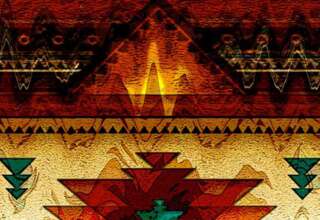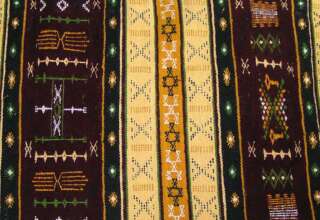
Turtle Island Reservation
Turtle Mountain Indian Reservation (Ojibwe language: Mikinaakwajiwing) is a reservation located in northern North Dakota, United States. It is the land base for the Turtle Mountain Band of Chippewa Indians. The population of the Turtle Mountain Indian Reservation consists of Plains Ojibwe (also known in the US as Chippewa) and Métis peoples; the reservation was established in 1882. The main reservation is located in Rolette County, North Dakota. The reservation is six by twelve miles, and it has one of the highest population densities of any reservation in the United States.
In 1882, the Turtle Mountain Reservation was established; it was originally much larger than today. In 1884, the United States reduced the size of the Turtle Mountain Reservation to two townships or 46,080 acres. Chief Little Shell III ceded the land in exchange for a large reservation that bordered the Fort Peck Reservation in Montana. During the negotiations over the 10 million acres in the early 1890s, the Chippewa leader and the United States government could not come to agreement. The United States forced chief Little Shell III and several hundred of his supporters off the reservation rolls, making them landless.
Throughout the mid-1860s, the bison population experienced a decline. Bison were a crucial resource for Métis populations, being important in the ways of life and the economy, as it was often sold and traded. This decline in bison numbers negatively impacted the Métis of Turtle Mountain. Many Plains Ojibwa moved to Turtle Mountain in the eighteenth century. This caused tensions between Métis and Plains Ojibwa, as they had to share these lands. Differences in histories and relations sparked tensions between the two groups. Although having tensions in some areas, Plains Ojibwa and Métis shared similar political goals for the future such as the goal to create a reservation that would be federally recognized and gaining recognition, on a federal level, of a political identity.
In February 1876, a document written by the Chippewa Indians of Turtle Mountain was signed by Little Shell III. This addressed the three points in political discussions with the federal government. These included the establishment of a reservation, the request to be politically recognized and the ability to sell land. As the resources available on the land were diminishing as a result of settler encroachment, the population of Turtle Mountain wanted the option to sell land. The year 1876 saw the implementation of a bill that would create a reservation for the lands claimed by Métis and Ojibwa. By 1882, there was increasing violence between the people of Turtle Mountain and white settlers, as settlers continued to encroach on Turtle Mountain. The United States federal government began interfering with the lives of the population of Turtle Mountain and forced them to pay federal taxes.
In March 1884, President of the United States Chester Arthur reduced the size of the reservation to six by twelve miles. It still has these same dimensions today This reduction was a 90 percent decrease in the size of the land, causing dissent among the people of Turtle Mountain. Through sentiments of disappointment due to the large reduction of land size, Metis and Plains Ojibwa were brought together, however still had some divisions in goals.






